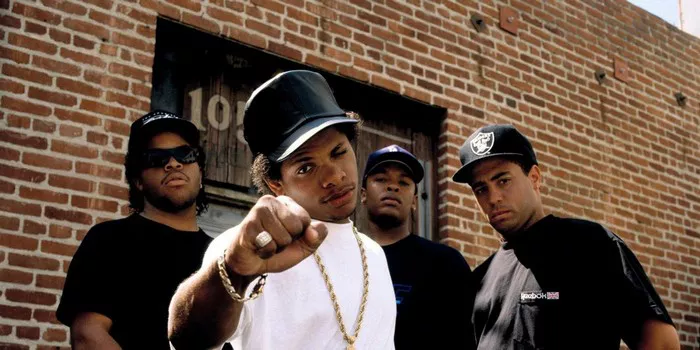In the vast landscape of hip-hop music, one can find a multitude of subgenres, each with its own unique characteristics and influences. Among these is the captivating realm of heavy rap, a subgenre that has gained traction and evolved over the years, captivating audiences with its powerful beats, aggressive delivery, and thought-provoking lyrics. In this article, we delve deep into the essence of heavy rap, exploring its origins, defining features, notable artists, and cultural impact.
Origins and Evolution
Heavy rap, also known as hardcore rap or gangsta rap, emerged in the late 1980s and early 1990s, primarily in the streets of urban America. Stemming from the socio-economic struggles and cultural tensions prevalent in inner-city neighborhoods, heavy rap served as a raw and unapologetic form of expression for artists to voice their experiences, frustrations, and observations.
The roots of heavy rap can be traced back to pioneers such as N.W.A (Niggaz Wit Attitudes), Ice-T, and Public Enemy, who laid the foundation for the genre with their gritty lyrics and aggressive delivery. These artists addressed issues such as police brutality, systemic oppression, and the harsh realities of street life, painting vivid portraits of urban landscapes often overlooked by mainstream society.
As the genre evolved, heavy rap became synonymous with a distinct sound characterized by hard-hitting beats, menacing basslines, and uncompromising lyricism. Artists like Tupac Shakur, The Notorious B.I.G., and DMX further propelled the genre into the spotlight, solidifying its place within the hip-hop landscape and influencing subsequent generations of musicians.
Defining Features
At its core, heavy rap is defined by its unapologetic authenticity and raw intensity. Unlike other subgenres of hip-hop, heavy rap places a strong emphasis on lyrical content that reflects the harsh realities of street life, often incorporating themes of violence, substance abuse, and social injustice.
Musically, heavy rap is characterized by its aggressive beats and dark, ominous soundscapes. Production techniques such as heavy sampling, distorted basslines, and abrasive percussion contribute to the genre’s gritty aesthetic, creating a sonic backdrop that complements the rawness of the lyrical content.
Furthermore, heavy rap is distinguished by its delivery style, which often features aggressive vocal performances characterized by rapid-fire flows, menacing cadences, and confrontational delivery. Artists within the genre are known for their commanding stage presence and ability to captivate audiences with their sheer energy and intensity.
Notable Artists
Throughout its history, heavy rap has been home to a myriad of influential artists who have left an indelible mark on the genre and the wider hip-hop community. From trailblazers of the past to contemporary innovators, these artists have shaped the sound and style of heavy rap, pushing boundaries and challenging societal norms along the way.
One of the most iconic figures in heavy rap history is Tupac Shakur, whose introspective lyrics and charismatic persona earned him widespread acclaim and adoration. Songs like “Changes” and “Dear Mama” showcased Tupac’s storytelling prowess and social consciousness, cementing his legacy as one of the genre’s greatest storytellers.
Similarly, The Notorious B.I.G., also known as Biggie Smalls, is revered for his unparalleled lyrical skill and vivid storytelling abilities. Tracks like “Juicy” and “Big Poppa” exemplify Biggie’s lyrical prowess and larger-than-life persona, solidifying his status as one of the greatest rappers of all time.
In addition to these legends, contemporary heavy rap artists such as Kendrick Lamar, J. Cole, and Run the Jewels continue to push the genre forward with their innovative sound and socially conscious lyrics. These artists embody the spirit of heavy rap, using their platform to shed light on pressing issues and inspire change through their music.
Cultural Impact
Beyond its musical contributions, heavy rap has had a profound cultural impact, influencing everything from fashion and language to social activism and political discourse. The genre’s unapologetic portrayal of urban life has resonated with listeners from diverse backgrounds, providing a voice for those marginalized by mainstream society.
Furthermore, heavy rap has played a significant role in sparking important conversations about race, class, and inequality. Artists within the genre have used their platform to address systemic issues such as police brutality, racial profiling, and economic disparity, amplifying the voices of those affected and advocating for meaningful change.
Moreover, heavy rap has inspired a sense of empowerment and resilience within communities facing adversity, serving as a source of strength and solidarity for listeners navigating difficult circumstances. The genre’s emphasis on self-expression and authenticity has empowered countless individuals to share their own stories and experiences, fostering a sense of connection and belonging within the hip-hop community.
Conclusion
In conclusion, heavy rap stands as a testament to the power of music to reflect, challenge, and inspire. From its humble beginnings in the streets of urban America to its global influence and cultural resonance, the genre continues to evolve and thrive, pushing boundaries and defying expectations with each new generation of artists. As we continue to navigate the complexities of the modern world, the raw honesty and unapologetic spirit of heavy rap serve as a guiding light, reminding us of the transformative power of art and the enduring legacy of those brave enough to speak truth to power.

